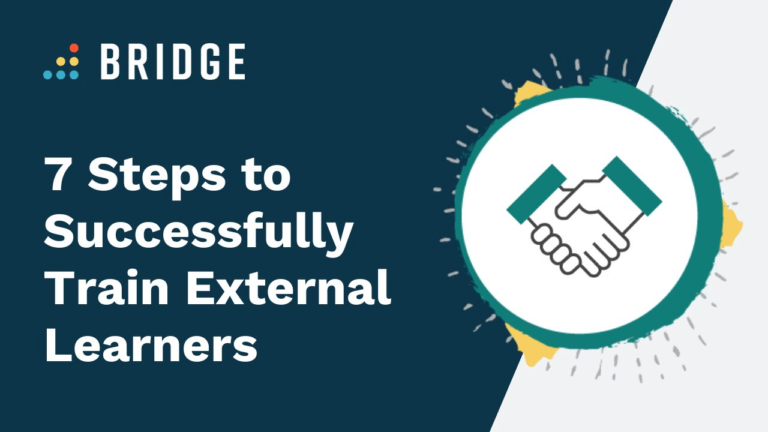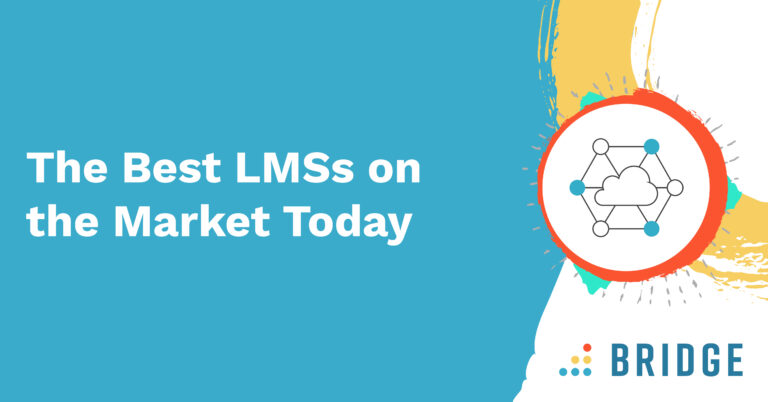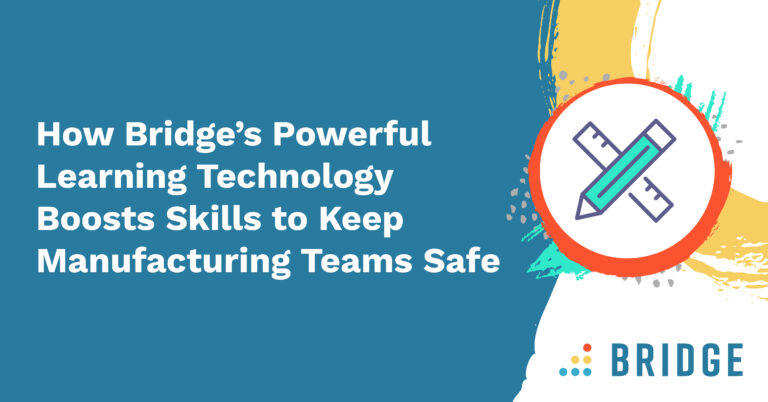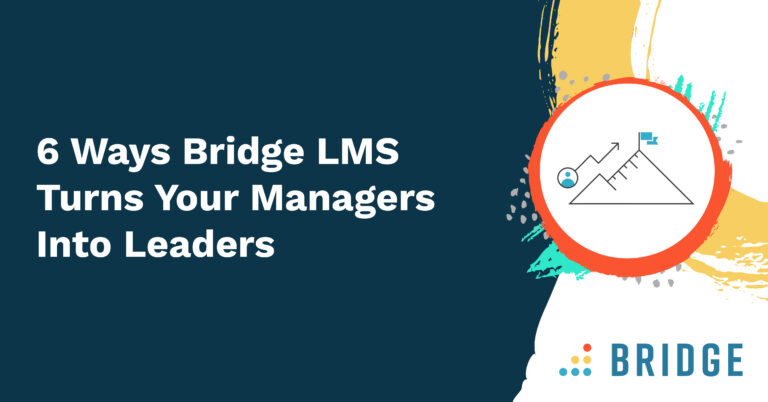The acceleration of digital learning has impacted both creators and corporations who serve external users with a content-first approach. There’s a need for modern tools to deliver seamless logins and intuitive user experiences around content visibility and accessibility.
Giving your extended network quick touchpoints to relevant training has the power to improve organizational performance.
Supporting Learners With a Content-First Approach
If you’re selling a product or service, there’s a high chance that you’re looking to establish online training portals. Sales and customer enablement initiatives traditionally required travel and time commitments, but the shift to eLearning has transformed an organization’s ability to scale knowledge transfer on their products or services. These are no longer “nice to have” functions—they’re expected resources that serve to build trust in the relationships while influencing high levels of adoption and engagement.
According to MIT and Deloitte’s 2021 Future of the Workforce report, 87% of organizations define their workforce in broader terms than just their full and part-time workers. For the majority, the definition can include contractors, service providers, distributors, and resellers. While 54% of companies rely heavily on external contributors’ skills, fewer than 30% have processes and systems to support their learning and development.
Whether the focus is on delivering certification-driven training courses for individuals and businesses or building sales and customer enablement platforms for your products or services, all of your external learners need access to training that’s direct and easily digestible. The content must be consumable both as independent micro-learnings and as part of a more in-depth training program. A learning-first strategy prioritizes relevancy and sets your stakeholders and contributors up for success.
RELATED READING | ‘How Personalized Learning Enhances Employee Skills Development’
Seven Simple Ways to Enable and Engage External Learners
Giving learners access to your knowledge base outside your organization’s “four walls” doesn’t have to be a challenge. With a system to build, track, and deliver effective learning programs, you can better meet the needs of your people and drive successful outcomes across the business. Here’s how:
1) Make Content Available On-Demand
Your partners and customers need in-depth knowledge of your brand and offering but don’t always want to formally enroll in a course to find the relevant information. An LMS with a reliable search function and a host of readily available resources (such as videos, PDFs, and SCORM trainings) is invaluable. Learners can find exactly what they need exactly when they need it. If you host virtual webinars or live training events, make sure these resources are available on demand.
For customers, partners, or contractors working remotely, a mobile app is a must-have to stay connected. With busy schedules and limited time at a desk, these users need downloadable content on hand whenever a quick refresher is necessary.
It’s also helpful to consider having content available for public consumption on a media hosting platform. This way, users can quickly find the micro-learnings they need for their quick “how to” questions without having to go through the formalities of logging into a system every single time.
The key is to create multiple touchpoints for these users to access what you deem to be the most worthwhile and ingestible bodies of knowledge.
TIPS TO EFFECTIVELY DELIVER TRAINING TO REMOTE WORKERS | ‘4 Ways to Boost Your Learning and Development Strategy for the Hybrid Workplace’
2) Create a Great User Experience
External learning is often self-directed, so users need to know that investing in training is a good use of their time. Think carefully about who’ll use each lesson and what essential information they’ll gain as an end result. Since customers and partners are more likely to pick and choose bits of your content in small chunks than engage with an entire sequence of content in a single sitting, each element should be independently accessible. Invest in creating engaging content in easy-to-understand formats so users can quickly dip in and out.
It’s not just the content that needs to be easy to navigate—your entire learning platform must be intuitive and scalable across different devices. Simple additions like course recommendations and quizzes enhance the learning experience and guide users on where to go next.
TIPS TO FIND THE RIGHT LEARNING PLATFORM | ‘How to Choose an LMS for Your Organization’
3) Use Video Content
Partners and customers need access to training that’s quick and to the point—a complement to the fast-paced world in which we currently live. In 2005, YouTube took about eight months for its first video upload to reach one million views. This invention transformed how we ingest content and has since influenced many of our daily experiences. Training can happen in this social experience, and videos are perfect because they can be direct and raw while delivering high-level value. Access to a library of product demos, tutorials, and simulations lets users immediately find the information they need when they need it.
For partners to sell effectively, they need a deep understanding of your mission and values. But without being part of your culture, it’s harder for them to represent your organization and remember every nuance of your product. Video content helps close knowledge gaps between employees and partners and creates a cultural awareness that more easily translates to pitches and demos.
MAKE MULTI-CHANNEL LEARNING WORK FOR YOU | ‘Does Your L&D Approach Meet the Needs of Today’s Learner?’
4) Use Data to Drive Decision-Making
Creating an impactful learning experience is only half the story. To deliver great results, you need to understand the effectiveness of training. With data and analytics in one place, you’ll uncover insights about who spends the most time learning, what topics and formats are the most engaging, and who your strongest performers are.
Your data can help improve skills and processes too. External learners won’t always be aware of available resources, their benefits, or what courses best suit their needs. Looking at trends in the LMS allows you to automatically recommend the most relevant materials based on insights like skills gaps, sales trends, or a new product launch. Using one dashboard can also reveal insights such as buyer behavior, reach, and training outcomes that help construct more relevant learning paths.
If courses become outdated or learners aren’t engaging with materials, an eLearning authoring tool streamlines the ability to create newer versions of similar bits of content and redistribute it as needed.
RELATED READING | ‘Delivering Results: The Importance of Tracking Employee Learning’
5) Bring All of Your Tools Together
When you bring all of your tools together, you give learners the best experience and support them with information and data. If you have videos, presentations, or documents distributed across several platforms, an API can support with centralization of these materials—whether you created them yourself or bought them from an external provider.
By leveraging different systems, your LMS becomes a more natural part of the ecosystem and enhances the learning experience. You can connect your storefront to give customers easy access to training and schedule reminders, updates, and automated recommendations through a workflow tool.
Single sign-on (SSO) can make the experience more seamless across platforms. Always keep content styling and branding consistent so external users can identify your organization.
THE POWER OF PERSONALIZED LEARNING | ‘How Personalized Learning Enhances Employee Skills Development’
6) Personalize Learning Journeys
Within your same segment of external partners or customers, you’ll likely find pockets of people with their own training needs and preferences. Some vendors might need sales training to market products, while sales reps and distributors will require a more hands-on approach to understand how your product works. There’s also a difference between one-time lessons to use a product and continuous support for evolving software features. Consider how often you’re likely to change your product offering or update specific features and position that next to how quickly you can create new content to support learning needs.
You’ll want to consider a strategic approach that allows you to build custom learning experiences. Time-influenced learning journeys address these unique needs.
Creating and scheduling personalized learning journeys makes training engaging, digestible, and relevant. With the right tool, you can break up courses for learners to complete over time, schedule reminders when it’s time for a knowledge refresh, and automate content delivery. These tactics will help you keep partners up-to-date with the latest developments without interrupting their specific workflows. Consider incentives in the learning journey—leaderboards, recognition, rewards, or certifications will help keep learners on track and boost motivation.
DISCOVER THE POWER OF COURSE CHUNKING | ‘Go Places With Bridge Journeys: Course Chunking for Learners’
7) Control Access and Permissions
It goes without saying that external training isn’t a one-size-fits-all deal. Look for a platform with the accessibility and flexibility to oversee and meet all needs efficiently. If you want influence over your content’s searchability and visibility, features like sub-accounts and smart groups make this possible.
Sub-accounts allow organizations to operate multi-tenant ecosystems so your business can easily affiliate content and manage user provisioning across multiple instances from a central source of truth. With a series of dynamic filters, smart groups empower account admins to bulk expose and enroll users into content customized to their needs. Smart groups also allow for quick collections and segmentations of data, which are necessary to assess your organization’s future content strategies.
DOES YOUR LMS WORK FOR REMOTE WORK? | ‘A 7 Question Guide to Evaluating Learning Platforms For Your Workforce’
Transform Your Training With Bridge
Create fully customizable learning experiences for your external learners with Bridge’s LMS. Build and manage compelling courses to boost skills, increase engagement, and motivate partners, customers, and contractors.
An intuitive, easy-to-use platform, Bridge integrates with your tools and systems to distribute on-the-job training, track results, and create an overall seamless experience.




